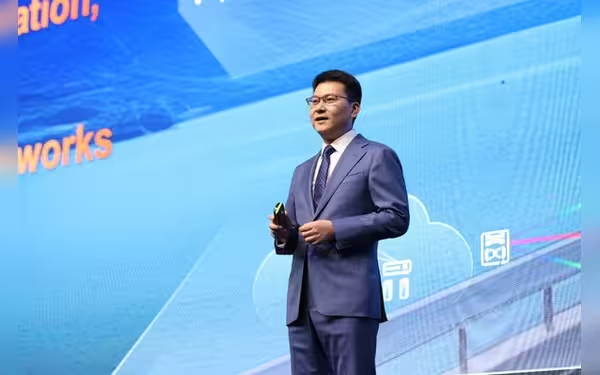Thursday, November 7, 2024 03:28 AM
Huawei Proposes AI-Centric F5.5G All-Optical Network for Telecom Growth
- Huawei introduces AI-centric F5.5G all-optical network.
- Over 1,300 AI models applied across industries.
- Focus on enhancing user experience and operational efficiency.
 Image Credits: en_prnasisa
Image Credits: en_prnasisaHuawei proposes an AI-centric F5.5G all-optical network to enhance telecommunications growth and user experience.
In recent years, the world has witnessed a significant shift towards artificial intelligence (AI), impacting various sectors, including telecommunications. As technology continues to evolve, companies are exploring innovative ways to integrate AI into their services. Huawei, a leading global technology provider, has proposed the development of an AI-centric F5.5G all-optical network. This initiative aims to assist carriers in achieving new growth in an increasingly competitive market.
During the 10th Ultra-Broadband Forum held in Istanbul, Turkey, Bob Chen, President of Huawei's Optical Business Product Line, delivered a keynote speech emphasizing the importance of AI in modern telecommunications. He highlighted that over 1,300 foundation models have already been applied across different industries, showcasing the rapid adoption of AI technologies. From enhancing mobile phones to improving the functionality of PCs and automobiles, AI is becoming an essential component of our daily lives.
Bob Chen pointed out that as we move further into the AI era, some telecommunications carriers are likely to transform into AI all-service providers. This transformation will require robust infrastructure networks that can support high bandwidth, low latency, and high reliability. Huawei is at the forefront of this innovation, continuously developing its F5.5G technology to help carriers build AI-centric all-optical networks.
One of the key areas of focus for Huawei is optical transmission. The company has made significant advancements in optical switching technology, which is crucial for data centers and metro edges. By implementing optical switching, data centers can enhance the scale and efficiency of AI computing. Huawei's solutions allow for the expansion of intelligent computing capabilities, supporting millions of cards while reducing failure rates by approximately 20% compared to traditional methods.
Moreover, Huawei's all-optical switching technology enables carriers to create low-latency networks, ensuring optimal AI experiences for users. Currently, over 50 carriers worldwide have adopted this technology, successfully establishing 1 ms metro networks.
In addition to optical transmission, Huawei is also focusing on optical access. Bob Chen emphasized the necessity for fixed broadband to provide premium services. With more than 28% of global users lacking fiber connections, there is a pressing need to accelerate fiber coverage. Huawei's solutions, such as QuickConnect ODN and AirPON, are designed to facilitate fast and cost-effective network construction.
Furthermore, Huawei advocates for the monetization of bandwidth and user experience. Many carriers currently offer limited package rates, which do not fully utilize the potential of optical fibers. By upgrading to higher-speed packages and improving service quality, carriers can enhance user satisfaction and drive growth.
As the industry evolves, there is a growing consensus on the transition from Fiber to the Home (FTTH) to Fiber to the Room (FTTR) networking. This shift ensures that users receive optimal experiences anytime and anywhere. With over 30 million global FTTR users, Huawei is committed to accelerating innovation in this area, aiming to support smart homes through a unified FTTR network.
Lastly, Huawei's management and control platform leverages digital twin technology and AI foundation models to enhance user experience and operational efficiency. By implementing automatic fault locating and online planning, Huawei significantly reduces user complaints and shortens service delivery times.
The next decade is poised to witness the rapid popularization of AI across various sectors, particularly in telecommunications. Huawei's vision of an AI-centric F5.5G all-optical network represents a significant step towards achieving new business growth in the intelligent era. By collaborating with industry partners, Huawei aims to build premium networks that not only enhance user experiences but also drive innovation in AI applications. As we embrace this technological revolution, it is essential for carriers to adapt and evolve, ensuring they remain competitive in a fast-changing landscape.













